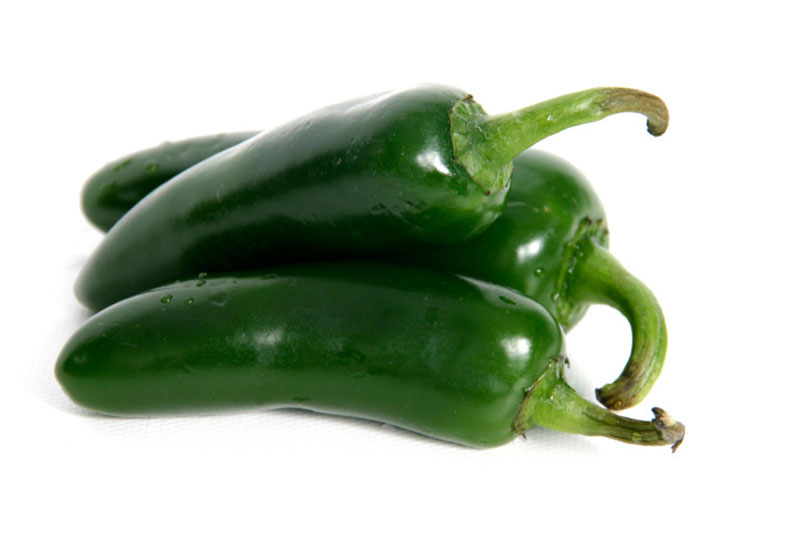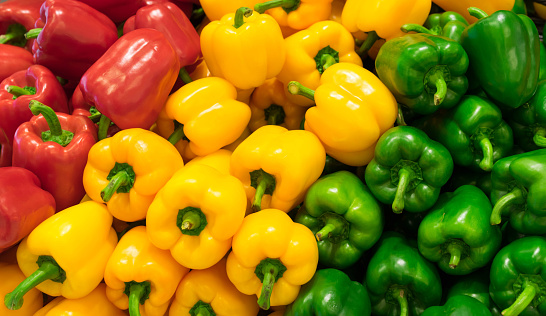Peppers, Jalapeno

Availability:
Year-round
Availability:
| J | F | M | A | M | J | J | A | S | O | N | D |
Notice:
on demand
Receiving/Storage:
Receiving Information: Generally speaking, chili peppers should be smooth, shiny, well colored, and firm. Avoid peppers that appear shriveled or decayed. Dry lines or striations across the skin indicate a hotter pepper. These lines are not an indication of poor quality. Storage/Handling: Temperature/humidity recommendation for short-term storage of 7 days or less: 45-50 degrees F / 7-10 degrees C. 85-95% relative humidity.
Keep chili peppers away from ethylene producing fruits, ripening rooms, and strong drafts.
Description:
Small, pointed pepper that ranges in color from bright green to greenish-black. These peppers are hot and should be used with caution. May be chopped and used in cooked or uncooked dishes. The heat scale for peppers is called the Scoville Scale. It was created by Wilbur Scoville in 1912 by using a solution of sugar water and a panel of tasters. When presented with a pepper, the tasters decided how many units of the sugar solution it took to completely eliminate any detection of heat in their mouths. Now it is done scientifically. The Jalapeno averages 2,500 – 8,000 on the scale.
Please note: the spicy hot oils from the pepper will transfer onto the cutting board and skin during chopping. Use gloves, and thoroughly clean cutting board in order to avoid cross contamination to other non spicy foods.


